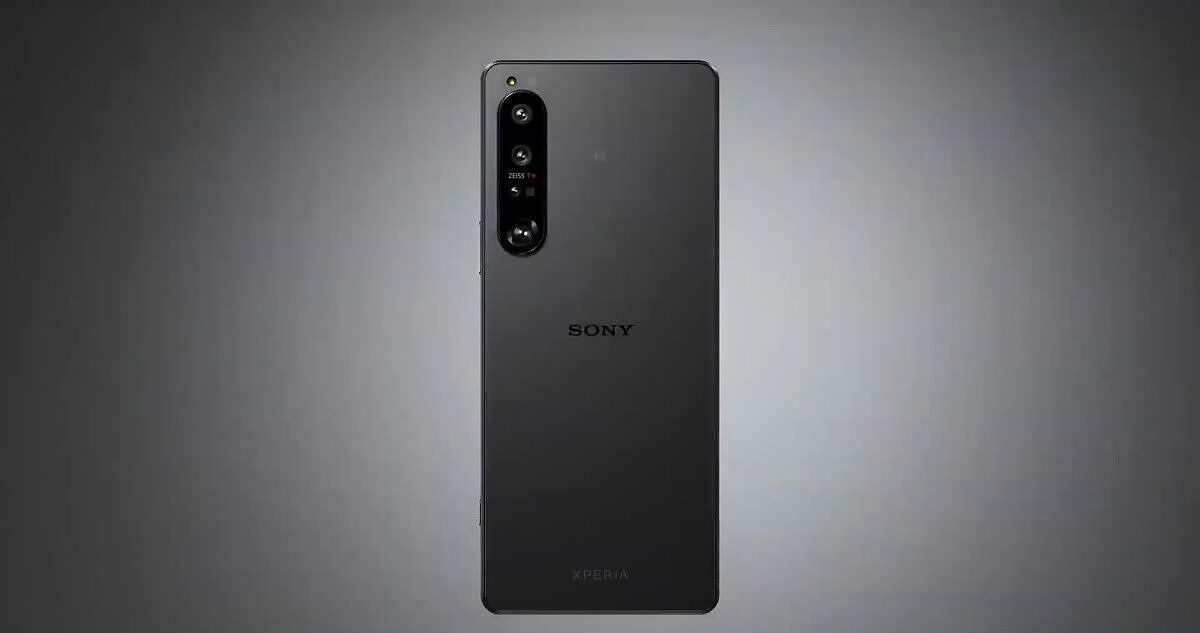Sony has long given up on the idea of competing against big smartphone OEMs in every market at every possible price bracket. Instead of trying to appeal to mainstream buyers, the company has embraced its identity as a niche player and seems content with catering to a small but dedicated audience. The company’s Xperia 1 line has always stood out from the crowd for its unique characteristics and promoting features that have long disappeared from the mainstream flagships. Today, the Japanese smartphone maker unveiled the next iteration of its flagship, dubbed the Xperia I IV.
Sony Xperia I IV: Specifications
| Specification |
Sony Xperia I IV |
| Dimensions and Weight |
|
| Display |
- 6.5-inch 4K OLED HDR (3840 x 1644)
- 120Hz refresh rate
- 240Hz touch sampling rate
- 100% DCI-P3
- HDR BT.2020 (Rec.2020)
- D65 White point
- 21:9 aspect ratio
- Corning Gorilla Glass Victus
|
| SoC |
- Snapdragon 8 Gen 1
- 1x ARM Cortex-X2 @ 3.0GHz
- 3x ARM Cortex-A710 @ 2.50GHz
- 4x ARM Cortex-A510 @ 1.80GHz
- Adreno 730 GPU
- 4nm process
|
| RAM and Storage |
- 12GB RAM
- 256GB/512GB storage
- MicroSD card support
|
| Battery & Charging |
- 5,000 mAh battery
- 30W fast charger (inside the box)
- Wireless charging
- Reverse wireless charging
|
| Rear Camera |
- Camera setup:
- Primary: 12MP, f/1.7, 24mm, 1/1.7″, 1.8µm, OIS, Dual Pixel PDAF
- Secondary: 12MP ultra-wide, f/2.2, 16mm, 1/2.6″, Dual Pixel PDAF
- Tertiary: 12MP periscope, f/2.3-2.8, 85mm-125mm, OIS, Dual Pixel PDAF
- Quaternary: 3D iToF sensor
- Features:
- ZEISS optics
- 120fps read out speed (all lenses)
- 20fps AF/AE tracking burst with noise reduction (all lenses)
- 60fps continuous AF/AE calculations
- Real-time Eye AF (all lenses)
- AI super resolution zoom
- Optical SteadyShot with FlawlessEye
- Cinema Pro 4K 120fps recording with up to 5x slow motion
|
| Front Camera |
|
| Ports |
- USB Type-C port
- 3.5mm headphone jack
|
| Connectivity |
- 5G (Sub-6Hz)
- Bluetooth 5.x
- 802.11 a/b/g/n/ac dual-band WiFi
- NFC
- GPS, GLONASS, Galileo
|
| Other features |
- Full range front-firing stereo speakers
- Dolby Atmos
- Hi-Res Audio
- 360 Reality Audio (through speakers)
- 360 Spatial Sound (over headphones)
- IP68 water and dust resistance
- Dedicated camera shutter button
|
| Software |
- Android 12 out of the box
|
By and large, the Xperia I IV is an incremental upgrade, but it does bring some notable improvements to the table, including a brighter display, better telephoto and selfie cameras, new photography features, and a bigger battery.

The Sony Xperia 1 IV sticks to the same squared-off design that we have seen on the previous Xperia 1 models. You get a large 6.5-inch 4K OLED display on the front with a 120Hz refresh rate and 21:9 aspect ratio. While the size and resolution are unchanged, the new panel is now up to 50% brighter than the last year.
Cameras are once again the main focus here. Sony hasn’t fallen for the megapixel race, choosing to use the good old 12MP resolution sensor for all three cameras. The main shooter has an f/1.7 aperture with 24mm equivalent focal length, optical image stabilization, and 1.8-micron pixels. The 12MP f/2.2 ultra-wide shooter is the same as the last year.

The telephoto sensor is where we see an upgrade. Sony has used a variable periscope zoom lens that can seamlessly switch between different focal lengths between 85mm and 125mm. That means you can now shoot at 90mm, 100mm, or any other focal length between the 85mm-125mm range without degrading the resolution. This wasn’t possible on the Xperia 1 III, which could only switch between two focal lengths: 70mm and 105mm.
All three lenses offer 120fps read-out speeds, Real-time Eye AF, 20fps burst shooting with HDR, and 60fps continuous autofocus and auto-exposure calculations. Other noteworthy camera features include 4K 120fps video recording, Videography Pro with Live streaming support, and improved HDR video recording. Over on the front, the selfie camera has been upgraded from 8MP to 12MP.
Under the hood, the Xperia 1 IV is powered by the Snapdragon 8 Gen 1, paired with 12GB RAM and 256GB/512GB storage. The phone packs a large 5,000mAh battery — a step up from the 4,500mAh cell on the Xperia 1 III — and supports fast wired, wireless, and reverse wireless charging.
Sony is one of the few OEMs that pays close attention to the audio experience, and the new Xperia 1 IV is a testament to that. The phone comes equipped with a 3.5mm audio jack, full-range dual stereo speakers, Dolby Atmos support, 360 Reality Audio, and Hi-Res Audio support. The on-device speakers are now much louder thanks to the addition of an extra booster unit, improving the low-range sound.
On the software side, the Xperia I IV runs a near-stock version of Android 12 out of the box. Other noteworthy highlights include a side-mounted fingerprint reader, IP68 water and dust protection, Wi-Fi 6, NFC, a microSD card slot, and dual SIM.
Pricing & Availability
The Sony Xperia 1 IV is priced at $1,600 and will go on sale in September 2022. It’s available for pre-order starting today from Sony’s website in black and purple colors.
The post Sony’s new Xperia I IV brings a 4K 120Hz display, improved zoom lens, and a large battery appeared first on XDA.
from XDA https://ift.tt/WfZojH5
via
IFTTT
![]()






